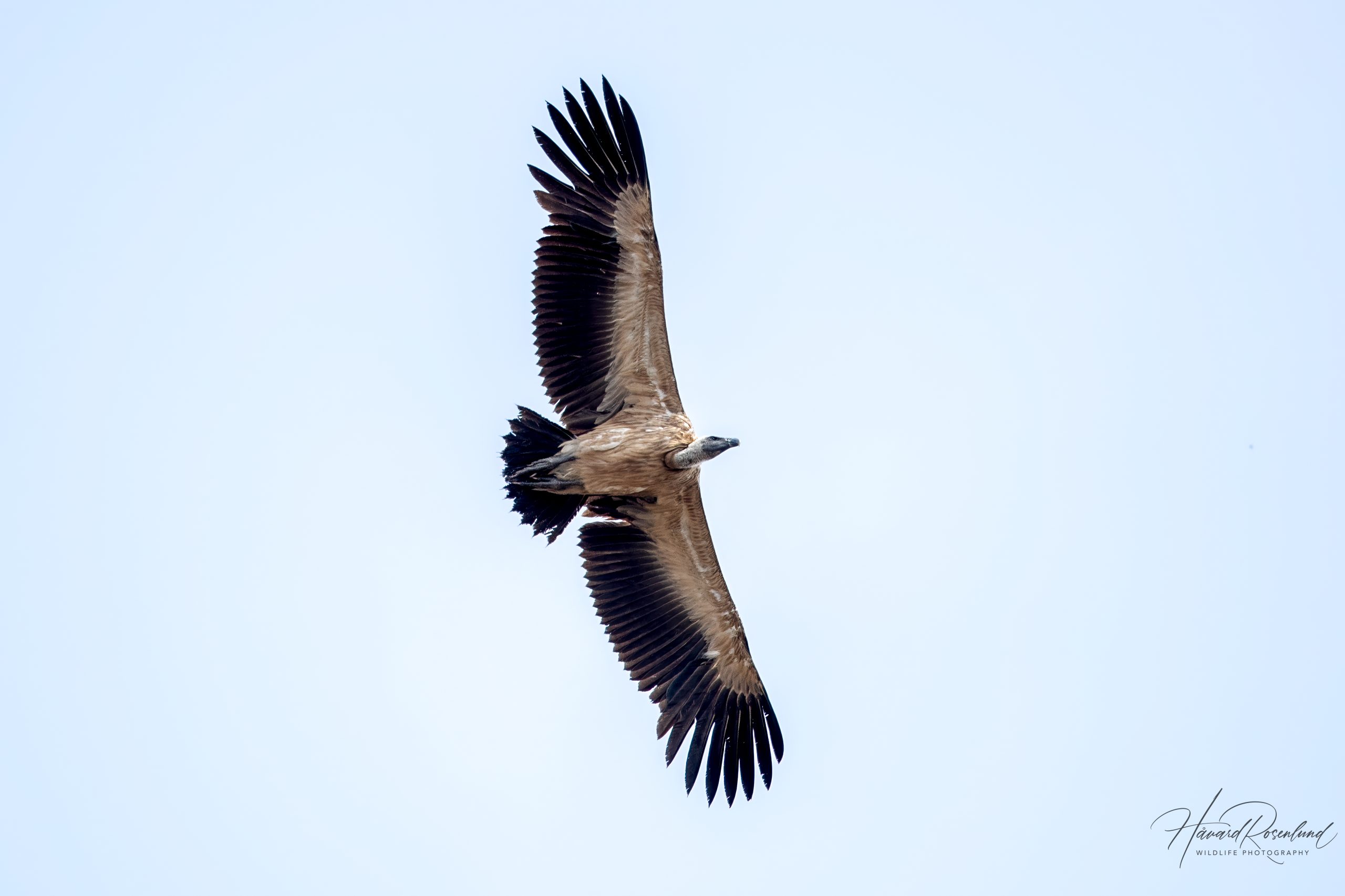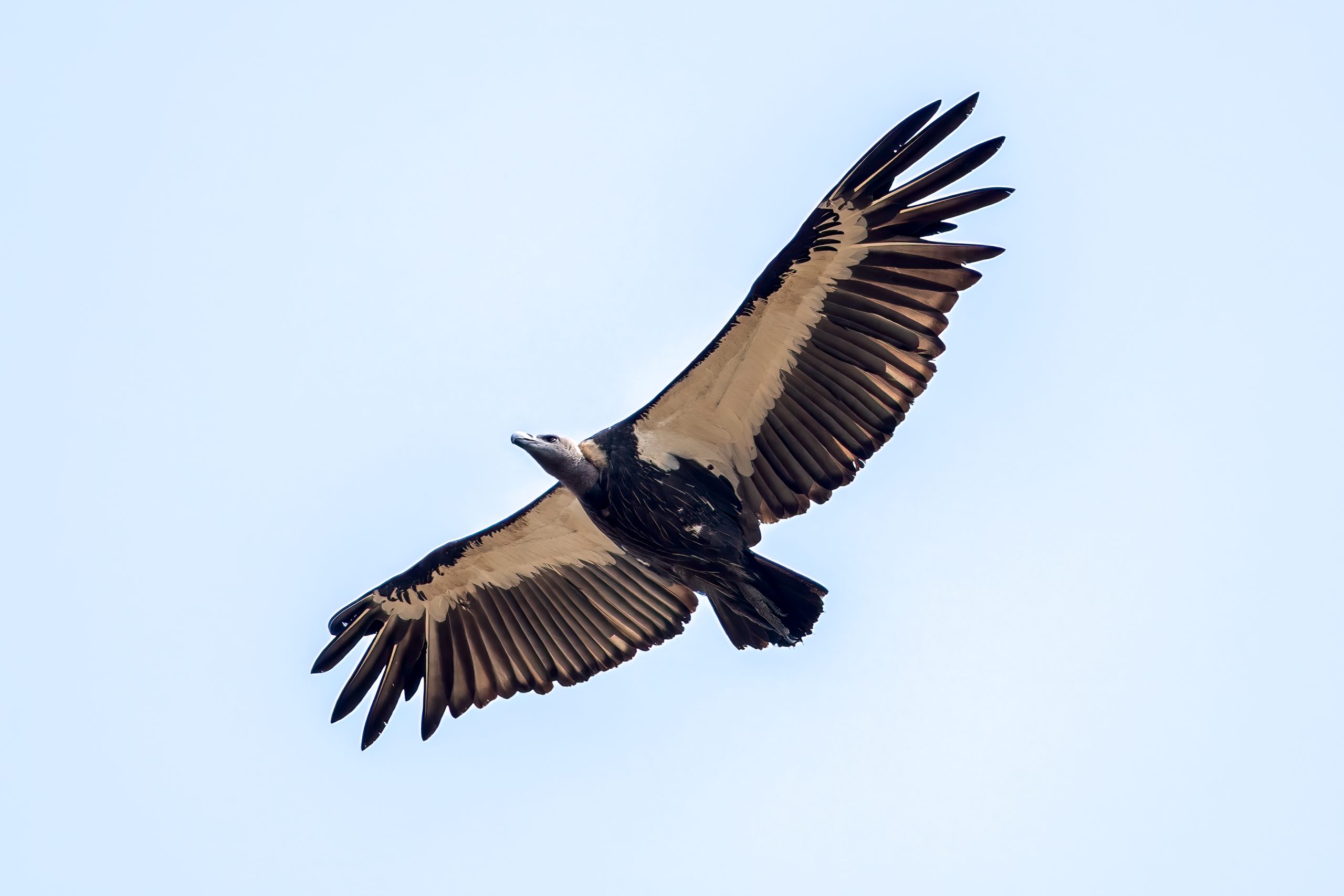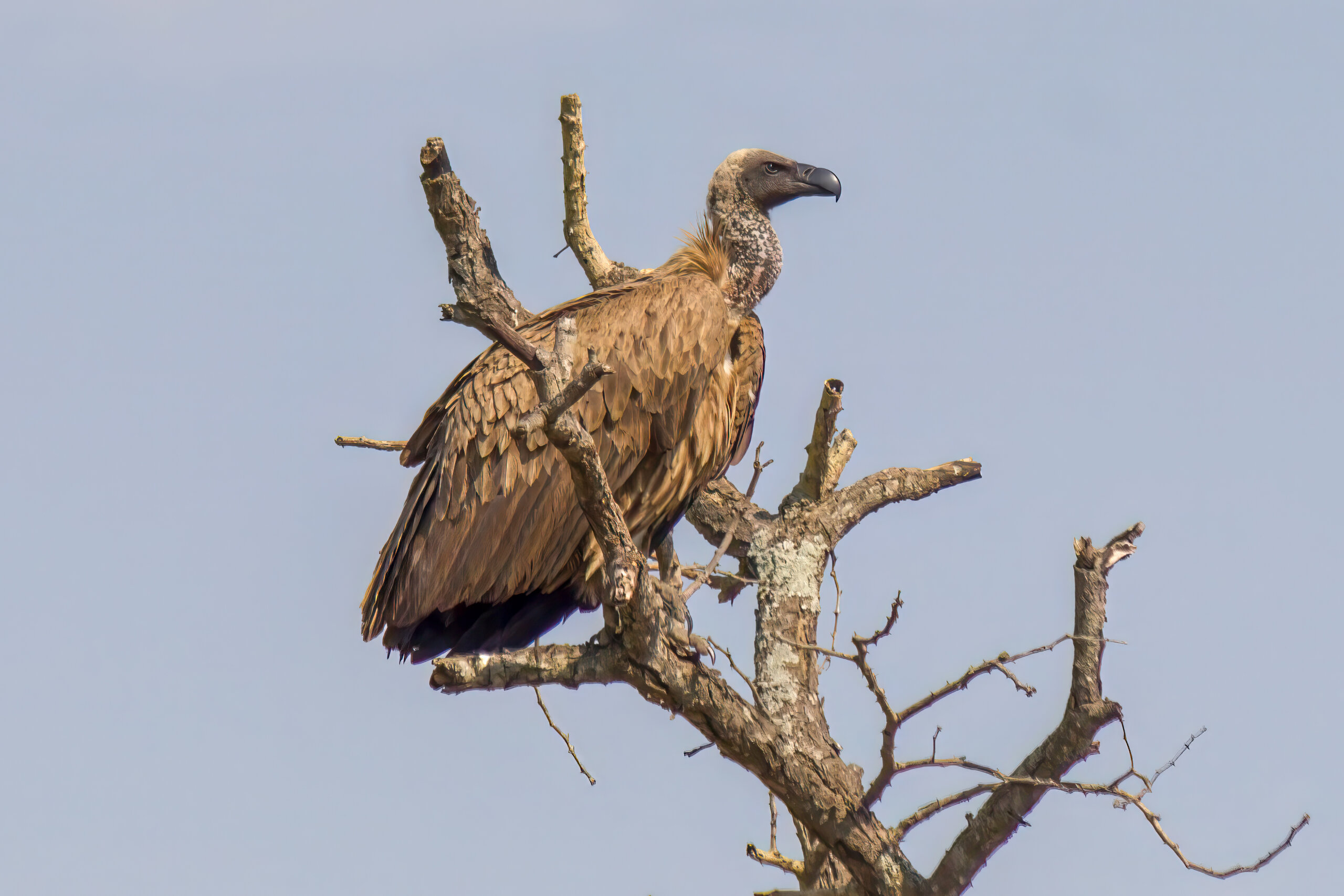Description
The Indian vulture (Gyps indicus) is a robust and large bird of prey, endemic to the Indian subcontinent. It inhabits regions from southern Pakistan through to central and southern India. Adult Indian vultures typically have a wingspan of about 1.96–2.58 meters (6.4–8.5 feet) and weigh between 5.5 to 6.3 kilograms (12.1–13.9 pounds). Their plumage is predominantly pale with contrasting dark flight feathers. They have a pale yellow bill and a distinctive bare, blackish neck with whitish down. The down on the neck is reduced as they age. Compared to the similar slender-billed vulture (Gyps tenuirostris), the Indian vulture is smaller, have a paler head and neck that is more downy, and a paler and thicker bill.
Diet & habitat
Indian vultures are typically found in open areas, including savannas, grasslands, and foothills, often near human settlements where livestock is present. They are highly dependent on large ungulates, consuming carcasses of cattle, buffalo, and other large mammals. These vultures are obligate scavengers, feeding almost exclusively on carrion. They possess a highly specialized digestive system that can break down decayed meat without falling ill from pathogens. Indian vultures play a crucial ecological role by controlling disease spread and supporting a balanced ecosystem.
Indian vultures locate food primarily by soaring high above the ground and spotting carcasses or by observing the behavior of other scavengers. Their keen eyesight allows them to detect food from great distances, and they often gather in large numbers at a carcass, which helps them deter potential competitors like jackals and feral dogs.
Behavior
Indian vultures are social birds, often seen in groups, especially around food sources and nesting sites. They display a hierarchical feeding behavior, where dominant individuals eat first. They are less aggressive than other vulture species, often yielding to species like the red-headed vulture (Sarcogyps calvus) at carcasses. Despite their size, Indian vultures can be agile fliers, utilizing thermal updrafts to cover vast areas with minimal effort.
Nesting
The breeding season of the Indian vulture typically spans from November to March. They build their nests on high cliffs or tall trees, often using large sticks and lining the nest with softer materials like grass and feathers. Both males and females share in the incubation duties, which lasts around 45-50 days. Usually, a single egg is laid per breeding season. Chicks fledge approximately 120-130 days after hatching but remain dependent on their parents for several weeks post-fledging, gradually learning to feed and forage on their own. Fledglings are often seen practicing flying techniques near their nesting cliffs before fully integrating into the adult population.
Status
The Indian vulture is listed as critically endangered on the IUCN Red List. The primary threat to their survival has been the widespread use of the veterinary drug diclofenac, which is toxic to vultures. Vultures ingest diclofenac by feeding on the carcasses of livestock treated with the drug, leading to acute kidney failure and death.
Conservation efforts have focused on banning diclofenac in veterinary use and promoting safe alternatives such as meloxicam. Additionally, vulture breeding centers have been established to help bolster the population through captive breeding and reintroduction programs. Conservationists also advocate for the creation and maintenance of vulture safe zones, areas free from diclofenac and other harmful chemicals.











